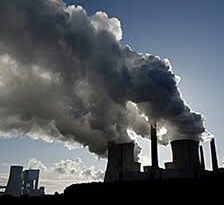Strategic Environmental Assessment
We have seen that the EIA process is usually applied in major development projects to ensure that likely environmental problems are anticipated and appropriate mitigation measures proposed before project commencement and throughout the project cycle.
It however became obvious with the global environmental issues and an increased need for a sustainable development that the EIA process occurred too late in the planning process. Strategic Environmental assessment developed from the application of the tenets of the EIA process to actions including policies, plans and programmes.
SEA is defined by Therivel as “the formailsed, systematic and comprehensive process of evaluating the environmental impacts of a policy, plan, programme and its alternatives,
including the preparation of a written report on the findings of that evaluation, and using the findings in publicly accountable decision making”.
Policies were defined by Glasson et al. as an inspiration and guidance for action. Plans were defined as sets of co-ordinated and timed objectives for the implementation of policy. Programmes are sets of projects in a particular area
| EIA | SEA |
| Actions are immediate, operational | Actions are strategic, visionary, conceptual |
| Detailed decisions to do with location, design, construction, operation of a project | Wide development options e.g. fiscal, regulatory, organizational, spatial |
| Short or medium timeline | Medium or long timeline |
| Reactive, mitigates negative impacts by design | Proactive, prevents negative impacts, promotes positive chances |
| Focus, methods and techniques specific. More structured. | Focus, methods and techniques change based on decision making level of practitioner |
| More specific assessment methods legal and industry requirements in assessment. Rigour more certain | Assessment based on professional judgements objective benchmarks and good practice. Rigour more uncertain |
| Uses more quantitative data | Uses more qualitative data |
| Less geared towards sustainable development due to methodology | More geared towards sustainable development Due to methodology |
SEA Procedures
These procedures may be:
EIA based- structured and rigorous using specific steps
Non EIA based- less structured and less rigorous used for decision making and higher policy making
Advantages of SEA
Encourages consideration of environmental objectives during policy, plan and programme making for all organizations
Helps consultation between all stake holders
Enables formulation of standard mitigation measures
Encourages consideration of alternatives rejected in EIA
Helps in the location of the right sites for projects before EIA
Help effective analysis of cumulative effects of projects
Helps in the consideration of long term or delayed impacts
Problems Areas in SEA
Long timelines and large geographical areas

Ensuring use of relevant baseline information
Limited information
Choice of right alternatives
Identification and assessment of cumulative effects
Difficulty in understanding concepts and methods by stakeholders
Use of SEA as a creative process in strategic decision making.
In conclusion,strategic Environmental Assessment (SEA) is a process to ensure that significant environmental effects arising from policies,plansand programmesare identified, assessed, mitigated, communicated to decision- makers, monitored and that opportunities for public involvement are provided.
Strategic Environmental Assessment is a generic tool and has become important instrument to assist in achieving sustainable development in public planning and policy making in the developed nations.
The SEA process informs planners, decision makers and affected public on the sustainability of strategic decisions. It also facilitates the search for the best alternative and ensures a democratic decision making process. This in turn leads to more cost and time effective Environmental Impact Analysis at the project level.
SEA is the formalised, systematic and comprehensive process of evaluating the environmental impacts of a policy, plan, programme and its alternatives, including the preparation of a written report on the findings of that evaluation, and using the findings in publicly accountable decision making.
Read Also : Waste Recycling and Disposal Guide
Although SEA evolved from EIA, SEA procedures may be EIA based- structured and rigorous using specific steps or Non EIA based- less structured and less rigorous used for decision making and higher policy making.
While EIA deals with detailed decisions to do with location, design, construction, operation of a project, SEA deals with wide development options e.g. fiscal, regulatory, organizational and spatial. The processes of SEA include screening, scoping, assessment, report production, monitoring and consultation.



